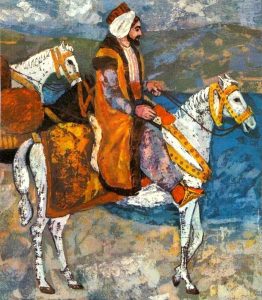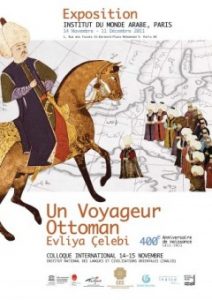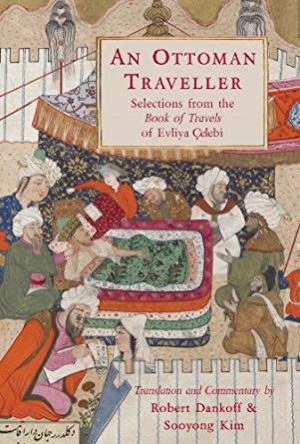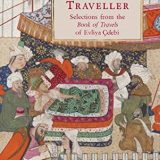
An Ottoman Traveller, Evliya Çelebi – Dankoff & Kim, trans. ed.
An Ottoman Traveller, Selections from the Book of Travels by Evliya Çelebi – Edited and Translated by Robert Dankoff and Sooyoong Kim – 2011
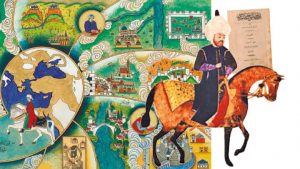
http://www.theglobaldispatches.com/articles/evliya-celebi-an-ottoman-traveller
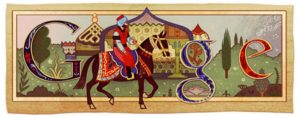
Posted by Ozay Mehmet, 17/01/2017
When Ottomans and their history come to mind, Europeans are generally interested only, (maybe obsessed is more apt), about the last 2 or 3 centuries from the 17th century to the present, the period of decline. The preceding 500 years, the period of rise and supremacy, are ignored, except for the specialist.
If you want a casual, but an intelligent read about Ottoman society, customs and worldview at the pinnacle of their power, there are few better books than Dankoff & Kim’s, summarizing in 482 pages, the ten-volume masterpiece, Seyahatname by Evliya Çelebi (1611-1684). It is nothing short of a magnificent door to a yet little-known, magical garden of knowledge.
In Dunkoff and Kim’s Çelebi you will find exotic descriptions of Cairo and African animals like giraffes and crocodiles in Sudan. Rich diversity comes to life from the bazaars of Damascus, the Anatolian kervansarays, the gardens of Bahçesaray in the Khanate of Tatars, to the oil fields of Baku. The Siege of Malta, conquest of Crete, and Safavid Persian borderlands in the Caucuses are recounted with a keen eye, all of which still make a fascinating read, more than three centuries later.
Undoubtedly, the most amazing parts of Dankoff and Kim’s volume are Çelebi’s accounts of the late medieval Europe. It is written with an incredible degree of confidence, bordering on arrogance, of a devout Muslim. Europe is Kafiristan, the land of Franks, Germans and others, all non-believers. Normal is Islam. The land of Islam, Dar-ul-Islam expands in all directions, its domain extending in the West from Hungary to Persia and Central Asia in the East, from Sudan in Africa to Crimea and Ukraine in the North. With a haughty sense of superiority, Çelebi looks down upon the poor peasants of Hungary, Poland, and the petty Kings and Princes of Germania and elsewhere. These are lands and resources for the taking. He joins the Ottoman Gazi warriors and Yenicheri troops, backed by Tatar regulars and irregulars on various campaigns. Every season, these border raiders, akıncılar, go on campaigns for war booty, collecting slaves and valuables. In one case, Çelebi writes of an attack in a city in Holland, in obvious exaggeration or mythology, “10,000 infidels fell captive in this raid. God be praised, my share of the booty was one girl, one boy and seven horses.” (p. 190).
In 1665 Çelebi was in Vienna, the Golden Apple to the Ottomans. Churches, cathedrals and two other things, impressed Evliya. Watches and the free conduct of women. “All the infidel notables and sophisticates” of the city he wrote, “take their pleasure for weeks and months…. their darling boys and lovely girls swim in the river that flows through the city.” (p. 231). He records: “5,500 shops…each worth an Egyptian treasure…And the shops are unequalled in the operation of wonderful objects and strange instruments. Alarm clocks, clocks marking prayer times, or the month and day, or the sign of the zodiac…all are functioning.” (p.232).
Çelebi had an audience with the young Habsburg Emperor Leopold I, whom he impressed easily with his knowledge of Christian holy places in Jerusalem. Two years later his audience was none other than Sultan Mehmed IV. In 1683 the Ottoman army was at the Gates of Vienna. They had come in response to request for aid by the French monarch, an arch-rival of the Habsburgs. When Evliya Çelebi died, the Ottoman expansion had reached its territorial limit. The rout in Vienna was followed by two and a half centuries of slow death when the Sultanate was finally abolished in 1922.
Ozay Mehmet, Distinguished Research Professor of International Affairs, Carleton University.
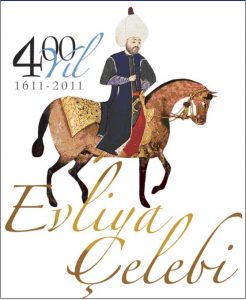 Evliya Çelebi – 400th Birthday
Evliya Çelebi – 400th Birthday
